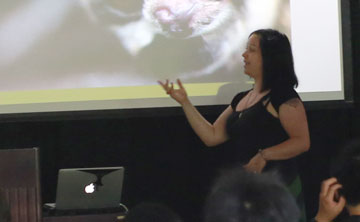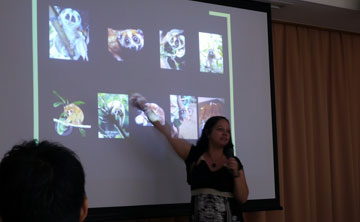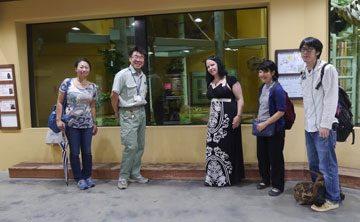Asura International Seminars
Presenter
and Affiliation
Dr. Anna Nekaris
Nocturnal Primate Research Group, Oxford Brookes University, UK
Bio: http://www.social-sciences.brookes.ac.uk/people/Academic/prof.asp?ID=184Title
Why are slow lorises venomous and can this help us to conserve them?
Abstract
The ability to produce and inject venom is rare amongst mammals, with Asia’s slow loris being the only primate known to have this trait. Since 2012, research on Indonesia’s slow lorises has helped us to elucidate the nature of their venom. By conducting research on wild-caught captive and free-living animals, we tested several hypotheses for its function including: prey consumption; anti-predation; ecto-parasite defense; intraspecific competition. We also have begun laboratory analyses of the biochemistry; collected information from local people on their beliefs regarding the venom and any data on its harmful effects; and collated medical studies on the impact of loris venom on humans. The most obvious selective functions with the greatest support from field investigations are that loris brachial oil forms part of an anti-parasitic defense function whereas loris saliva functions as a weapon in intraspecific competition. Despite these functions, slow loris venom is still capable of killing a human. The greatest threat to globally threatened slow lorises is the illegal wildlife trade. Thus understanding and disseminating information about the biology of their venom has proven a useful conservation tool. Using information from social networking, I discuss these impacts.
In Inuyama
Date and Time
Tuesday June 21, 2016. 13:00-14:00


Place
Large Conference Room, Primate Research Institute, Inuyama
The seminar will be hosted jointly by
Leading Graduate Program in Primatology and Wildlife Science, Kyoto University
and Primate Research Institute, Kyoto University.
In Kyoto
Date and Time
Friday June 24, 2016. 14:00-15:00


Place
Lecture Room, Kyoto City Zoo, Kyoto
Acknowledgment
両セミナーとも野生生物保全論研究会(JWCS) http://www.jwcs.org/の後援となります。